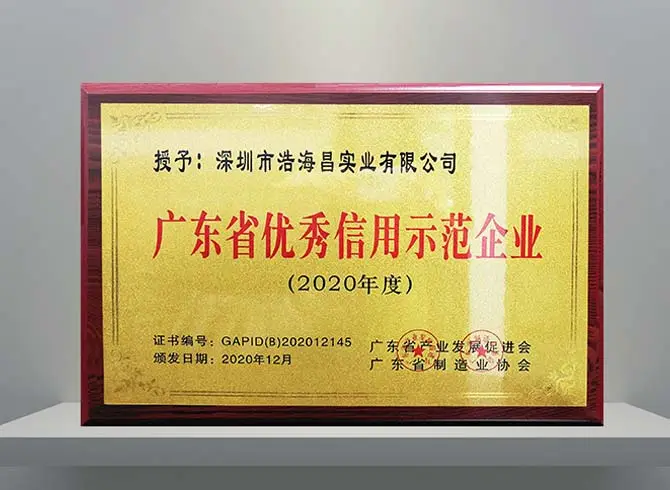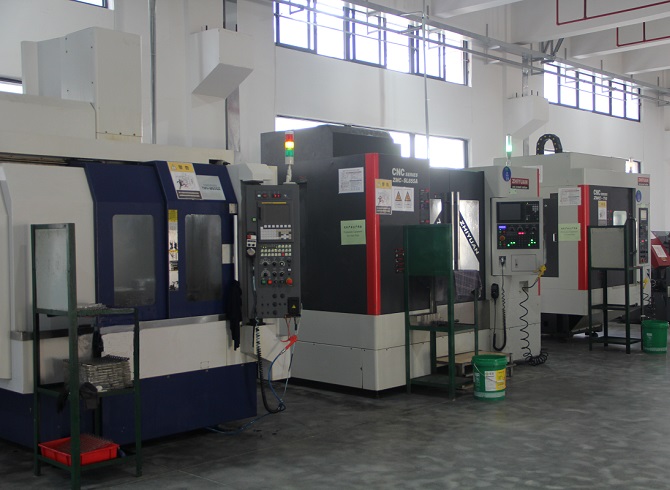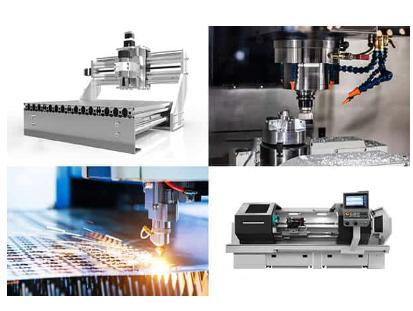
CNC Machining is a process that involves programming the motion of production equipment and tools using computer software. This method is commonly used to operate complex machinery such as milling machines, lathes, CNC milling machines, and grinders. Through CNC machining, a set of instructions can be utilized to accomplish three-dimensional cutting tasks.
Currently, there are various types of CNC machine tools on the market, each differing in their operational methods, tools, materials, and the number of axes that can be simultaneously cut. This article aims to provide guidance on different types of CNC machine tools based on various classifications and explains how to choose the CNC machine tool that best suits your needs.
Table of Contents
l 13 Types of CNC Machine Tools Classified by Function
l CNC Machine Tool Types Based on the Number of Axes
l Types of CNC Machine Tools Based on Motion Systems
l Types of CNC Machine Tools Based on Servo Systems
l How to Choose the Right Type of CNC Machine Tool?
l Conclusion
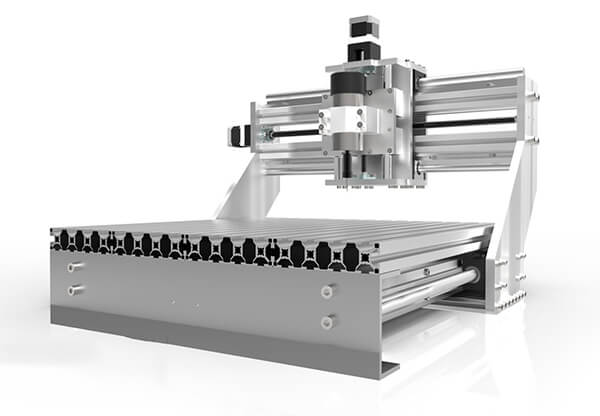
CNC machine tools can be classified in various ways, and one of them is based on their design and function. In this section, based on such classification, we will explore different types of CNC machine tools, their respective uses, and limitations of each type.
CNC Milling Machine
CNC milling machines are machines similar to CNC milling machines. However, they are typically used for processing softer materials, and their precision may be slightly lower compared to CNC milling machines.
A typical CNC milling machine consists of a mechanical base, power source, spindle, stepper driver, stepper motor, and controller. Compared to traditional machining methods, CNC milling machines offer advantages such as increased productivity, improved accuracy, and reduced material waste, allowing for faster production of products.
Similar to CNC milling machines, CNC milling machines can offer various axis configurations, ranging from three axes to six axes. Entry-level CNC milling machines typically use a 3-axis system to carve the workpiece into the desired shape. Additionally, rotary tool attachments (4 axes) can be purchased separately to machine curved workpieces.
CNC milling machines excel in utilizing computer numerical control to mill the spindle and machine paths, enabling the machining of various materials such as aluminum, steel, plastics, wood, composite materials, and foam to achieve the desired final design and shape.
Applications
CNC milling machines are highly versatile machines suitable for cutting intricate shapes, widely used in various applications, including:
l Woodcarving for furniture
l Decorative moldings
l Interior and exterior decoration
l Door carving
l Signage
l Musical instruments
l Limitations
However, it's essential to be aware of some limitations of CNC milling machines, such as:
l High noise levels: Due to components like the spindle, exhaust system, and vacuum system, CNC milling machines generate significant noise during operation.
l Residual dust: Working with CNC milling machines typically produces a considerable amount of wood or metal dust, posing potential dust-related challenges in the working environment.
Cost
Regarding the cost of CNC milling machines, their initial prices usually range from $3,000 to $100,000. The hourly rate for CNC milling work is similar to the hourly rate for CNC milling machines.
A CNC drilling machine is an automatic drilling tool capable of creating precise and intricate holes on workpieces. Equipped with mechanically rotating drill heads, these machines radially penetrate the workpiece to form cylindrical holes. The design of the drill head allows the waste material, known as chips, to fall off the workpiece. Various types of drill heads are available for different applications, including screw machine drill heads, deep hole drill heads, center drill heads, and chamfering tools.
CNC drilling machines automatically control parameters such as spindle speed, feed rate, cutting speed, and cutting depth based on instructions provided by CNC programmers. Compared to traditional manual drilling techniques, these machines can process materials at higher speeds. They come equipped with intelligent tool exchange and positioning technologies, contributing to increased productivity.

Applications
CNC drilling machines find applications across various industries, including:
l Automotive Manufacturing
l Shipbuilding
l Aerospace
l Construction Machinery
l Mold Making
l Woodworking and Furniture Production
l Limitations
While CNC drilling machines offer versatile applications, certain limitations need consideration:
Hole Size: There are limitations in the sizes of holes that CNC drilling can create. It may not be suitable for creating deep or large holes. Additionally, specific drill bit sizes are required for different hole diameters.
Cost
The average cost of a CNC drilling machine is approximately $25,000.

CNC lathes utilize a single-point cutting tool to remove material from a rotating workpiece and shape it according to specified dimensions. In comparison to manual lathes, CNC lathes enhance the speed and precision of finished product manufacturing.
These machines are well-suited for various processes, including cutting, drilling, turning, grinding, facing, and knurling. In CNC turning, non-rotating tools move linearly along the rotating workpiece to create helical or spiral cutting paths. Different types of CNC lathes available in the market include turret lathes, general-purpose lathes, and specialized lathes designed for specific purposes.

Applications
CNC lathes find widespread applications across various manufacturing industries. Some common examples include:
l Camshafts
l Automotive components
l Gun barrels
l Crankshafts
l Baseball bats
l Musical instruments
l Table legs
l Furniture components
l Limitations
CNC lathes have certain limitations to consider, such as:
Symmetry: These machines are typically suitable for creating symmetrical components but may not be ideal for producing custom asymmetric shapes.
Cost
The initial cost of CNC lathes can start from around $15,000, with prices increasing based on machine specifications. The hourly rate for using CNC lathes is typically around $40 per hour.
CNC milling machines utilize high-speed rotating multipoint cutting tools to precisely remove material from a workpiece, usually fixed in place, to achieve the desired shape.
CNC milling machines are equipped with various cutting tools, each serving specific purposes. Common examples of cutting tools used in CNC milling include drill bits, face mills, end mills, milling cutters, and taps. These machines can be used in both vertical and horizontal configurations, as milling cutters can be directed either vertically or horizontally.
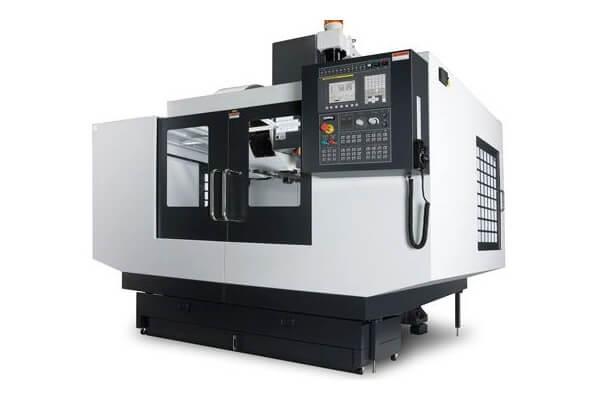
Applications
CNC milling machines have a variety of applications and can be used for tasks across different industries, such as:
l Cabinet making
l Furniture production
l Prototype modeling
l Sign making
l Musical instrument manufacturing
l Limitations
While CNC milling is an efficient technique capable of high-speed precision machining, there are also some limitations to consider, including:
l Size constraints: Each CNC milling machine has a maximum capability for processing part sizes, depending on the tool travel distance and the machine's housing dimensions.
l Operator skills: Skilled operators are required to accurately operate CNC milling machines, as operator errors can lead to accuracy deviations and design issues.
l Cost: Some users may perceive the initial cost of CNC milling machines as a limitation. However, it's worth noting that the advantages of precision machining make it a worthwhile investment compared to other methods.
Cost
The cost of CNC milling machines can vary significantly. There are more affordable options available, starting at around $10,000 for home use. On the other hand, purchasing milling machines for production workshops can involve an investment of $200,000 or more.
The hourly cost of CNC milling depends on the machine's axes. For a 3-axis CNC machine, the average cost is around $40 per hour, while machines with higher axes can reach up to $200 per hour.
CNC plasma cutting machines are capable of providing precise cuts by utilizing an electric arc, similar to a plasma torch. It ionizes the air and melts the material at the point of contact with the arc. However, the plasma cutting process is only suitable for conductive materials, and common materials used in plasma cutting include aluminum, stainless steel, steel, brass, and copper.
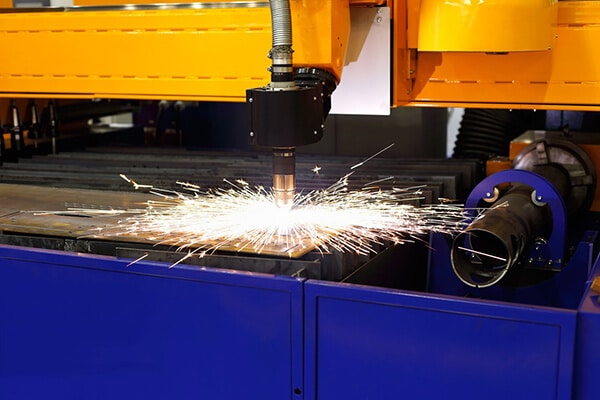
Applications
CNC plasma cutting machines are commonly used in:
l Automotive manufacturing
l Automotive repair
l Manufacturing workshops
l Salvage and scrapping
l Limitations
Considerations when using CNC plasma cutting machines include:
l Material: Plasma cutting is only suitable for cutting metals and conductive alloys, limiting its use on non-metal materials like wood and plastics.
l Heat-Affected Zone (HAZ): Plasma cutting generates heat to melt materials, resulting in a visible Heat-Affected Zone (HAZ) in the cut area.
Cost
The initial cost of a CNC plasma cutting machine can range from $12,000 to $300,000, depending on the model and specifications. The average hourly cost of using CNC plasma cutting machines is around $20 per hour.

CNC laser cutting machines share the ability to cut tough materials with CNC plasma cutting machines. However, unlike plasma cutting machines that use ionized gas, CNC laser cutting machines employ a highly focused laser beam.
Due to the smaller contact point and heat diffusion of lasers, CNC laser cutting machines often provide higher precision and excellent surface smoothness compared to CNC plasma cutting machines. However, CNC laser cutting machines are typically more expensive than CNC plasma cutting machines with similar functionalities (such as accuracy and cutting depth).
CNC laser cutting machines offer greater material flexibility and are commonly used for cutting various materials, including plastics, paper, fabric, metals, and hardwood. Laser intensity can be adjusted based on material density and strength, enabling efficient cutting.
These cutting machines are renowned for their multifunctionality in producing various designs, distinguishing them from other cutting machines. The cuts and edges produced by laser cutting machines are often highly precise and clean, requiring no additional finishing processes. Therefore, CNC laser cutting machines and engraving machines are preferred for manufacturing machine parts and equipment, as well as for engraving tasks, especially in areas like glass engraving, sign making, and woodworking art.
CNC laser cutting machines come in various types, categorized based on the type of laser medium used. These categories include gas lasers, liquid lasers, and solid-state lasers. The distinction is based on whether the active laser medium is in a gas, liquid, or solid state, and the composition of the active laser medium (e.g., CO2, ND: YAG, etc.). Among these, two main types of lasers commonly used in CNC laser cutting machines are carbon dioxide (CO2) lasers and solid-state lasers.
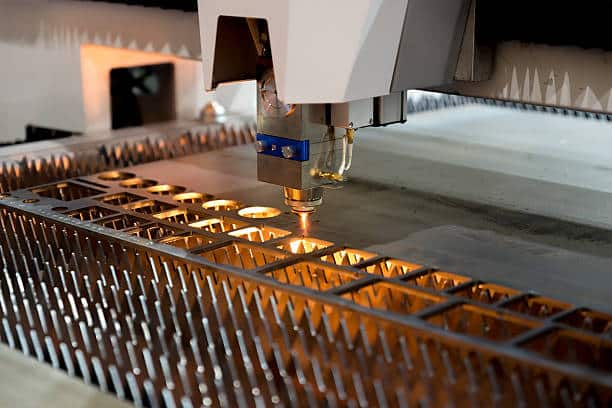
Applications
CNC laser cutting machines have a wide range of applications, including:
l Manufacturing aerospace parts
l Cutting automobile frames
l Producing medical equipment
l Engraving various materials
l Limitations
Considerations when using CNC laser cutting machines include:
l Limited Thickness: Laser cutting machines have a maximum thickness limitation for materials that can be effectively cut.
l Technical Expertise: Operating laser cutting machines requires highly skilled operators. Due to the potential hazards of laser beams, operators must possess the necessary expertise to control the machine as the laser beam moves over the workpiece.
Cost
The cost of purchasing a CNC laser cutting machine can range from $5,000 to $300,000, depending on the machine's specifications and functionalities. The average hourly cost of using CNC laser cutting machines is around $20 per hour.
CNC Electrical Discharge Machining (EDM), commonly known as spark CNC machine, utilizes electrical sparks to manipulate and shape materials. This electrical spark machining process is also referred to as wire EDM, die sinking, spark machining, or spark erosion.
EDM machines generate controlled sparks or discharges with temperatures reaching up to 21,000 degrees Fahrenheit to vaporize materials and achieve the desired shape. The workpiece is positioned between two electrodes: the top electrode and the bottom electrode.
Using the provided G-codes, the computer instructs the electrode on the required amount of discharge. This generates sparks, gradually removing material from the workpiece according to the specified design. To facilitate this process, dielectric fluid is used to flush or wash away the material consumed by sparks, completing the machining process.
EDM stands out for its ability to create intricate slots, micro-holes, as well as inclined or tapered features, which may be challenging with traditional CNC methods. It is a non-contact machining process as it uses sparks rather than cutting tools such as drills or end mills. This non-contact nature makes electrical discharge machining suitable for processing thin workpieces with complex and high-precision designs that may deflect under cutting forces.

Applications
Electrical discharge machining (EDM) has various applications, including:
l Manufacturing injection molds
l Die casting
l Punch and die sets for stamping
l Prototyping
l Limitations
Considerations when using CNC electrical discharge machining machines include:
l Material Limitations: EDM machines can only process conductive materials and are not suitable for processing plastics, ceramics, wood, or other non-conductive materials.
l Slow Cutting Speed: The cutting speed of EDM machines is relatively slow when machining corners and curves. This is due to the higher electrode wear caused by repeated discharges, leading to an overall reduction in production speed and increased costs.
Cost
The cost of a new CNC electrical discharge machining machine typically starts from $15,000. The hourly cost of operating these machines is approximately $25 per hour, with the cost of electrode wire being a significant component of the total cost.

CNC Grinding Machine
CNC grinding machines use abrasives to achieve smooth and precise surfaces in processed products. They are commonly used for components like drive shafts, camshafts, ball screws, and other workpieces requiring precision and polished surfaces. Many parts produced using CNC grinding machines are cylindrical in shape. Typically, the workpiece starts from a rough surface, initially shaped using CNC milling machines or lathes, and then moves to CNC grinding machines for final grinding operations to achieve the desired smoothness.
There are various types of CNC grinding machines, including external cylindrical grinders, surface grinders, roll grinders, etc. There are also many types of abrasives used for grinding, such as aluminum oxide, coated or ceramic cubic boron nitride, ceramic composite grinding wheels, diamond grinding wheels, and more.

Applications
CNC grinding machines have a wide range of applications, including:
l Manufacturing high-precision gears
l Producing automotive components
l Creating components for medical devices
l Manufacturing aerospace parts
l Mold and precision machining
l Limitations
Considerations when using CNC grinding machines include:
l Slow Machining Process: While CNC grinding machines can provide precise material removal, their operating speed is generally slower. This makes them unsuitable for applications that require material shaping, as they are primarily used for finishing and smoothing surfaces.
Cost
Compared to other CNC machine tools, CNC grinding machines are often relatively inexpensive. The cost of surface grinders, roll grinders, or external cylindrical grinders typically starts from $5,000. The operating cost of these machines is roughly $20 per hour.
CNC Waterjet Cutting Machine
CNC waterjet cutting machines, as the name suggests, use high-pressure water jets, sometimes with additional abrasives, to effectively cut various materials. These waterjet cutting machines can handle both 2D and 3D cutting and excel at cutting materials of significant thickness.
CNC waterjet cutting is chosen when dealing with materials that are susceptible to high temperatures and may melt, such as plastics and aluminum. While water alone can be used for cutting, adding abrasives like garnet or aluminum oxide to the water enhances cutting efficiency.
In terms of cost, CNC waterjet cutting machines are generally more expensive than plasma cutting machines with similar specifications. However, compared to CNC laser cutting machines with equivalent specifications, they are relatively more affordable.
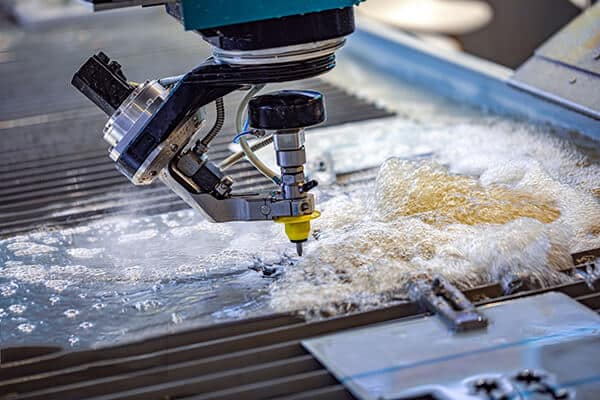
Applications
CNC waterjet cutting finds applications in various industries and materials, including:
l Cutting foam, paper, stone, ceramics, glass, and metal sheets
l Mining
l Aerospace sector
l Automotive industry
l General manufacturing
l Limitations
Considerations when using CNC waterjet cutting include:
l Cutting Time: CNC waterjet cutting machines often have a slower cutting speed compared to CNC plasma cutting machines and CNC laser cutting machines, especially when dealing with corner and curve cutting.
l Component Failures: Due to the use of ultra-high-pressure jets for cutting, there is a risk of component damage in waterjet cutting machines, especially when using lower-quality waterjet systems.
Cost
The cost of CNC waterjet cutting machines varies significantly, ranging from around $50,000 to as high as $200,000. The operating cost of these machines is typically between $15 and $30 per hour, with abrasive costs constituting a significant portion of the total hourly cost.

CNC Pick and Place Robots
In the manufacturing industry, pick and place robots have gained widespread popularity due to their specialized design for repetitive tasks. These CNC machine tools eliminate the need for manual handling of workpieces, reducing human interference and associated risks.
Typically, pick and place robots consist of motors or actuators used to control the motion of their mechanical arms and programs for securely gripping the workpiece. The type of gripping mechanism used depends on the nature of the workpiece: clamping fixtures are suitable for rigid and heavy workpieces like automobile chassis, while vacuum suction cups are more suitable for delicate workpieces like glass panels.
Pick and place robots are extensively used in the production of computers, tablets, smartphones, and other electronic devices. When choosing a pick and place robot for your application, factors such as lifting capacity, gripping mechanism type, and working range must be considered to ensure the best match for your specific requirements.
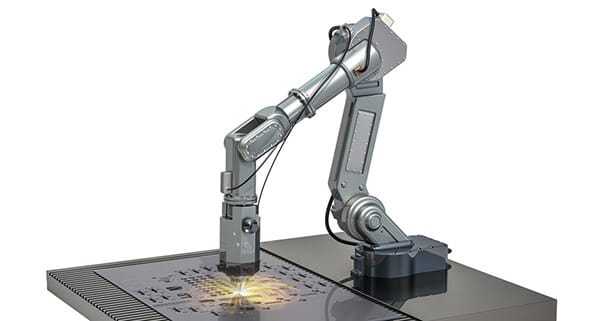
3D Printing Machine
CNC machine tools, commonly known as 3D printers, are used to create three-dimensional objects by layering materials based on digital designs or models. To prepare a 3D design, operators use CAD software, which is then sliced into 2D layers by CAM software to generate the commands needed to control the printing process.
3D printers, also referred to as additive manufacturing, differ from traditional subtractive manufacturing methods as they involve adding material rather than removing it. Typically, material is heated and extruded through a nozzle in the print head, which precisely moves to deposit material onto the work area, forming the desired part.
CNC machine tools for 3D printing are primarily used in prototyping, minimizing material waste as there is no need for excessive machining or material removal.
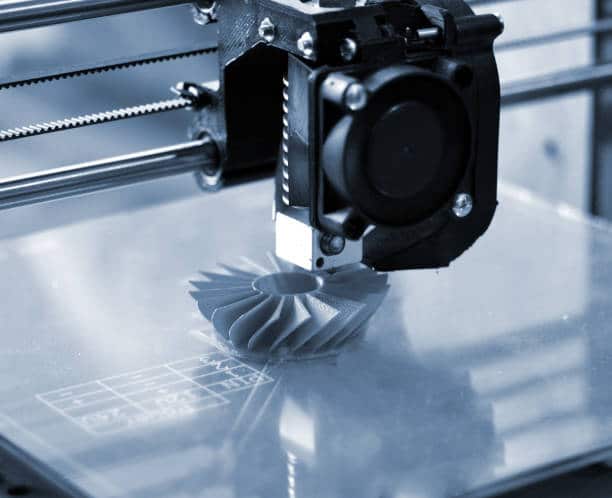
Automatic Tool Change CNC Machine
An Automatic Tool Change (ATC) is a variation of various types of CNC machine tools. This feature allows for the quick and efficient exchange of cutting tools within CNC machines. It enables seamless transitions between different types of cutting tools or the replacement of damaged or worn-out tools. The capability of automated tool changing processes can enhance production speed and minimize machine downtime significantly.
CNC machines equipped with an automatic tool change device represent a crucial step towards achieving full automation. Tool changes are often a bottleneck in CNC machining, but with ATC, tool-carrying capacity and productivity of the machine can be greatly improved. It also enhances the machine's ability to use a variety of tools.

CNC Press Brake
A CNC press brake consists of a computer-controlled press and dies, applying the necessary force to bend the workpiece into the desired shape. These machines are primarily used in the sheet metal industry to accurately bend or fold metal sheets to pre-programmed angles. Additionally, CNC press brakes can be used for bending metal bars and tubes.
Compared to traditional press brakes, CNC press brakes exhibit exceptional precision in bending operations. They are capable of manufacturing parts with precise dimensions and consistent results, making them highly popular in various large-scale industries such as metal fabrication, construction, automotive, and aerospace.
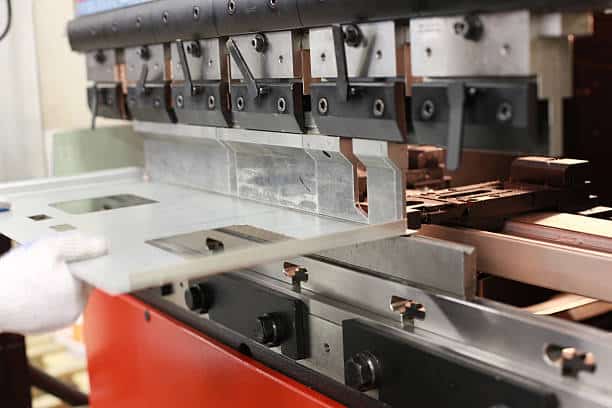
Once the type of CNC machine tool is determined, further classification is based on the number of axes used. Multi-axis processing is a special form of CNC machining that involves multiple axis movements to achieve complex geometries and precise tolerances.
For example, CNC milling machines can be classified into 3-axis, 4-axis, or 5-axis models, each offering different functionalities and prices. Here are some commonly used types of CNC machine tools:
2-Axis CNC Machine
A 2-axis CNC machine is considered the simplest form of CNC system. It consists of two movement axes: the X-axis (vertical) and the Y-axis (horizontal).
These machines are mainly used for performing simple tasks, such as straight-line cutting or drilling on a board. They are typically suitable for processing a single surface of a workpiece without the need for repositioning. The workpiece remains stationary during the machining process on a 2-axis CNC machine.
3-Axis CNC Machine
3-axis CNC machines are the most widely used type of CNC machine tool. They include three movement axes: X-axis, Y-axis, and Z-axis (depth axis), enabling them to process basic 2.5D parts.
These machines can operate on all six surfaces of square or rectangular material blocks, but material repositioning may be necessary. Nevertheless, the workpiece itself remains stationary during the machining process on a 3-axis CNC machine.
4-Axis CNC Machine
A 4-axis CNC machine is comparable to a 3-axis machine but includes an additional axis. In addition to the X, Y, and Z axes, a 4-axis machine also has a rotational axis known as the A-axis.
The A-axis allows the cutting tool to rotate along the X-axis. Alternatively, the workpiece can move along the same axis. These machines are particularly useful for creating grooves and performing cutting operations along arcs.
5-Axis CNC Machine
In 5-axis machining, an additional pivot motion is introduced, allowing the cutting tool or worktable to move along the Y-axis. The pivot and rotational axis are referred to as the C-axis.
These machines are known for their ability to work on all five surfaces of a workpiece without the need for repositioning, making them efficient for manufacturing complex and precise parts, especially valuable in medical and aerospace equipment production.
7-Axis CNC Machine
A 7-axis CNC machine includes three standard axes for moving the cutting tool, three axes for rotating the workpiece, and an additional seventh axis called the E-axis, used for rotating a fixed cutting tool arm.
These machines are commonly used in military, aerospace, and medical industries due to their capability to produce highly complex parts. The additional motion axes provided by the 7-axis configuration enable advanced machining operations and complex part designs.
CNC machines with automatic tool changers enhance efficiency by allowing rapid and seamless tool changes within the machine. This capability increases production speed and minimizes machine downtime, as different types of cutting tools can be seamlessly transitioned or replaced due to damage or wear.
9-Axis CNC Machine
A 9-axis CNC machine is a unique combination of a 5-axis milling machine and a 4-axis lathe. The milling aspect allows for machining the external surfaces of a workpiece to achieve the desired surface finish, while the lathe handles the completion of internal features.
This configuration enables 9-axis machines to manufacture parts with both internal and external features. These machines are well-suited for producing dental implants, surgical tools, and complex aerospace equipment. The ability to perform milling and lathe operations in a single setup enhances the multifunctionality and efficiency of the manufacturing process.

12-Axis CNC Machine
A 12-axis CNC machine features the most complex characteristics in the industry, equipped with two cutting heads capable of movement along all six axes - X, Y, Z, A, B, and C.
By employing dual cutting heads and utilizing all six possible axes, these machines can significantly improve precision. They have the potential to double production speed and achieve higher levels of productivity.
However, it's worth noting that the use of 12-axis CNC machines is typically reserved for specialized applications that demand extremely high precision and efficiency. For most standard applications, the complexity and cost of these machines may outweigh their benefits.
Conclusion:
After determining the type of CNC machine tool, further classification based on the number of axes provides a detailed understanding of its capabilities. The choice of CNC machine depends on the specific requirements of the application, considering factors such as complexity, precision, and cost.
The fundamental concept behind CNC machine tools is to achieve relative motion between the cutting tool and the workpiece. The tool continuously repositions and guides itself to predetermined locations, utilizing various methods for tool repositioning. This has led to the development of three distinct types of CNC machine tools:
Point-to-Point Positioning System:
The most basic type of computer numerical control (CNC) system is the Point-to-Point (PTP) controller. In this control system, the cutting tool is guided to predetermined points, and the machining process revolves around that specific cutting point.
PTP systems are relatively cost-effective and are commonly used for operations such as drilling, tapping, spot welding, and chamfering, where simultaneous positioning and machining are not required.
Linear Positioning System:
The Linear Positioning Control System allows simultaneous repositioning of the cutting tool and machining of the workpiece. However, at any given time, motion is confined to a single axis. The repositioning and machining processes are executed at controlled rates. This control system is named for its nature of linear machining, focusing on straight-line cutting and not suitable for curved cutting.
Contour Path CNC System:
The Contour Path CNC system, also known as Continuous Path CNC system, is the most expensive among the three positioning control systems, as it can create highly complex parts. This system can perform both Point-to-Point (PTP) and Linear Positioning. Additionally, it can simultaneously control the positioning of the cutting tool along multiple axes.
This multifunctionality allows the creation of surfaces (commonly referred to as contours) on the workpiece. CNC machines such as milling machines, lathes, and grinders employ this method for operations.
Under the category of servo systems, different types of CNC machine tool systems exist:
Open-Loop Control System:
In an open-loop control system, there is no detection or feedback device. The drive circuit amplifies power and unidirectionally transmits instructions from the CNC device to drive the stepper motor moving the machine table.
One of the advantages of this system is its affordability, as it is relatively inexpensive. However, its stability and accuracy are lower, resulting in a decrease in work quality.
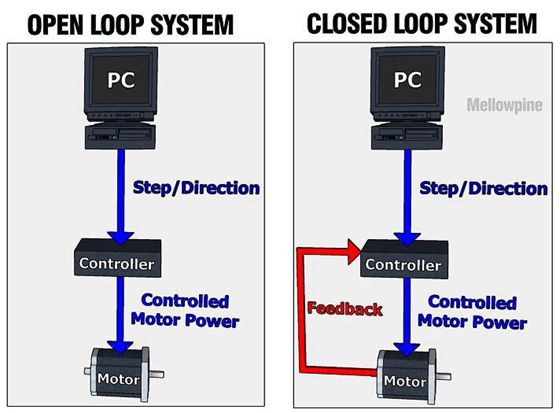
Semi-Closed Loop Control System:
In a semi-closed loop control system, the actual displacement of the worktable is determined by a displacement detection device directly located at the servo motor axis or the end of the ball screw.
This detection device compares the calculated value with the original instruction displacement value for the worktable and makes corresponding adjustments based on the difference. This control system is moderately priced but offers high precision and stability.
Closed-Loop Control System:
In a closed-loop control system, a linear displacement detection device is used, typically installed on the moving parts or tabletop of the machine tool. The comparator of the CNC device receives the detected actual displacement and compares it with the programmed instruction value.
Ensuring stability in closed-loop control CNC machines can be challenging. However, machines of this type exhibit high precision.
When deciding on the most suitable CNC machine tool for your company or project, several factors should be considered. The choice of CNC machine tool that best suits your requirements will depend on the nature of your business, the products you manufacture, production volume, and other factors. Here are some considerations to keep in mind when selecting a CNC machine tool:
Material Considerations:
When choosing a CNC machine tool, it's essential to consider the type of material being processed. The machine needs to be robust and durable enough to precisely mill complex components made of hard alloys. Precision machines that can maintain the required tolerances may be suitable for softer materials like low-carbon steel.
Business Type:
The nature of your business will determine the options available to you. For instance, if you run a small CNC machining workshop, your needs might be met with some CNC milling machines. However, if you manage a large manufacturing company, you may require larger, more versatile machines.
Complexity Requirements:
The type of CNC machine tool required largely depends on the nature of the work being performed. For simpler items, CNC lathes or three-axis milling machines might suffice. However, as complexity increases, machines capable of manufacturing multiple components in a single setup become more cost-effective. The most suitable machines for such tasks are five-axis CNC machines.
Specialized Products:
Certain product categories may require specialized CNC equipment. For instance, dedicated Swiss lathes are ideal for manufacturing thousands of intricate cylindrical parts.
Spare Parts Availability:
Like any other machinery, CNC machine tools may experience wear or faults over time. To minimize potential downtime, choosing a brand or model with readily available and easily replaceable spare parts is crucial. The availability of spare parts directly affects the time it takes to resume production.
Power Capacity:
These machines have high power requirements and typically rely on three-phase power for optimal operation. It is essential to ensure that the building has sufficient power capacity to accommodate new equipment. It is also advisable to evaluate current power consumption. While existing machines may currently operate within the available power supply, adding new CNC machines may exceed the capacity and lead to power shortages.
This article discussed different types of CNC machine tools based on various classifications, explaining their functionalities, applications, limitations, and how they are used in manufacturing. It also touched on how to choose the most suitable CNC machine tool based on specific requirements. It is evident that there are various choices when it comes to CNC machine tools. Considering the wide array of available machine types, selecting the ideal machine for your specific needs can be a daunting task. Additionally, CNC machine tools are often a significant investment, making the initial cost a crucial consideration.







